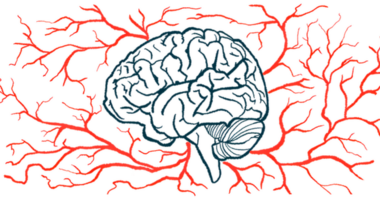Novel Motor Test Added to Trial of Highland’s Brain Stimulation Device
IMAS system may potentially be used to evaluate movement in other disorders

Highland Instruments will use its new technology — called the Integrated Motion Analysis Suite or IMAS — to objectively improve the evaluation of motor function in Parkinson’s disease patients undergoing treatment with its novel noninvasive brain stimulation device, called Electrosonic Stimulation (ESStim).
IMAS will now be included in an ongoing trial (NCT03981055) testing brain stimulation with ESStim versus a sham procedure in people with Parkinson’s who have postural instability, i.e., difficulty with balance and the reflexes that help a person to stand upright, according to a company press release.
ESStim uses electrical magnetic current and ultrasounds to stimulate the brain. The company hopes its IMAS system will serve as a tool to optimize therapy, including the delivery of the neurostimulation dose. The technology may also be useful to test motor function in other disorders.
“We are excited to advance our IMAS system into the clinic and look forward to implementing it not just in PD [Parkinson’s disease], but throughout the fields of neurology, rehabilitation, and physical medicine where assessing patient movement is critical to care,” said Laura Dipietro, PhD, at Highland Instruments and one of the developers of IMAS.
Posture instability increases risk of falls
Unstable posture can be one of the most challenging motor symptoms of Parkinson’s disease, and accounts for an increased risk of falls. Available treatments include medication and surgery but they are limited in their effectiveness to improve motion stability.
Assessing posture and motor function in Parkinson’s patients, however, is complex. Estimates suggest that non-specialists make errors up to 25% of the time when attempting to diagnose the disease and make motor assessments.
Although movement disorder specialists can make accurate diagnosis, analysis that reliably measures patients’ movements is a more objective tool that provides less variation than the typical Parkinson’s exams.
ESStim has been shown to improve postural stability in Parkinson’s in an earlier clinical trial, called JANUS 3A, where patients showed an improvement in their walking ability together with their quality of life and emotional well-being. In addition, other studies have shown that ESStim is useful to treat chronic pain associated with osteoarthritis, lower back, and diabetic neuropathic pain.
Building on the positive results of the previous trial, the new JANUS study, supported by a Small Business Innovative Research from the National Institutes of Health, will continue to test ESStim and investigate the utility of using IMAS to monitor the posture of patients.
The study is recruiting participants at Spaulding Rehabilitation Network Research Institute in Charlestown, Massachusetts. The trial is open to adults ages 40 to 90 who have Parkinson’s disease and balance problems, and are on a stable dose of medication.
All participants will be given physical therapy to help with balance issues. In addition, some participants will receive electrical stimulation of their brains with the ESStim device, while others will get a sham stimulation.
“In this JANUS series of trials, ESStim treated patients demonstrated clinically and statistically significant improvements in Unified Parkinson’s Disease Rating Scale assessments and numerous other clinical endpoints,” said Felipe Fregni, MD, PhD, professor at Harvard Medical School, and the trial’s lead investigator.
“Objective kinematic (motion) assessments are key for understanding the impact of therapy in these patients and delivering optimal care. The IMAS system will not only continue to aid us in the JANUS trials, it offers a potential future tool that can aid care givers in the diagnosis and management of movement disorders,” he added.
IMAS is also being tested to predict stroke recovery in acute stroke patients.








